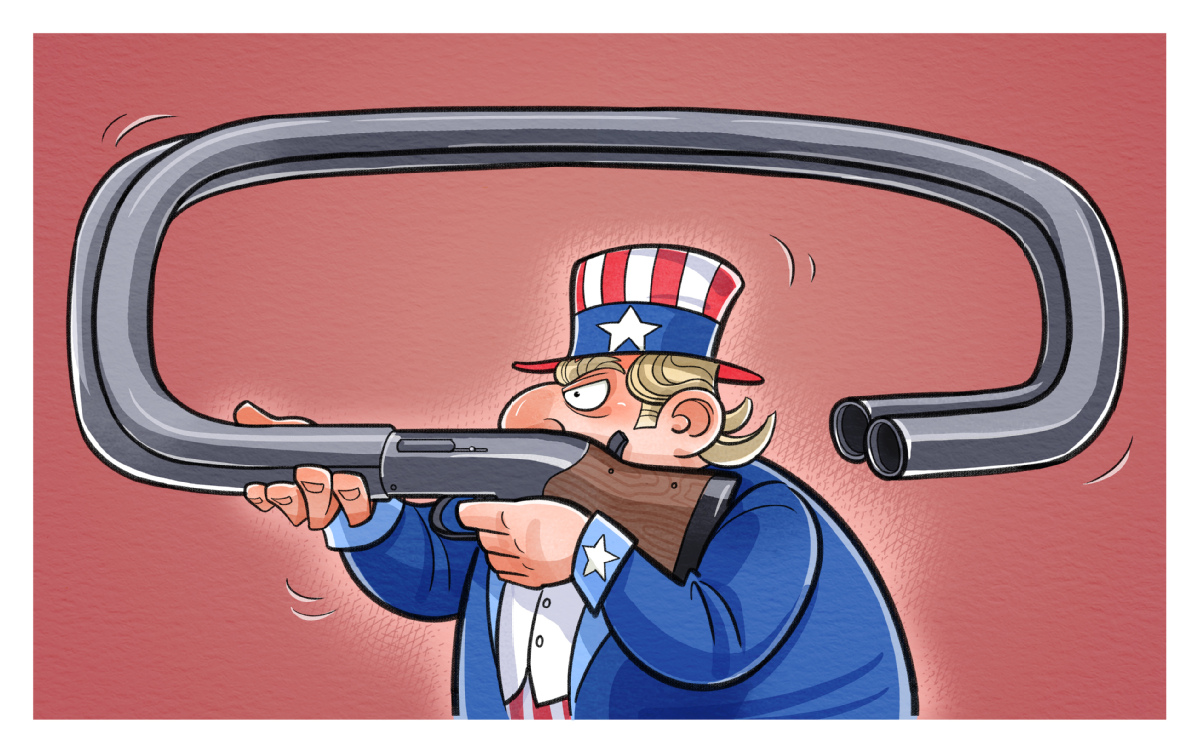Demonizing China gets the US nowhere


Since the start of this year, the US has launched a concerted and malicious smearing campaign against China, a strategy that is proving to be counterproductive. This campaign is evident through various events, including the politicized balloon incident, the orchestrated handshake at a security summit in Singapore and the fabricated "spy base" claims before US Secretary of State Antony Blinken's scheduled visit to China. By portraying itself as a victim and spreading unverified allegations, the United States aims to undermine China's reputation and interests.
One incident worth mentioning is that, despite Beijing's decision to decline a meeting during the Shangri-La Dialogue, the US Defense Secretary Austin walked up to shake hands with the Chinese Defense Minister Li Shangfu, who has been under US sanctions since 2018. While Austin emphasized at Asia's premier security summit that the United States does not seek a new Cold War, the actions of the US military tell a different story. It sent the USS Chung-Hoon, a Navy destroyer, along with the Canadian Navy HMCS Montréal, half way across the world right to the Taiwan Strait under the pretext of a "freedom-of-navigation operation." Confronted with US' unwaranted confrontaional and hostile behavior, China handled the situation in accordance with law and regulations in a solemn demonstration of the PLA's resolution and capability to safeguard its sovereignty and territorial integrity.
Not surprisingly, the US mainstream media has joined the chorus of the paranoid and vicious 'China threat.' Just before Blinken's planned visit to China this week, the Washington Post published an article, lacking credible evidence, claiming that China is constructing a covert spy base in Cuba, close to Florida, with the potential to intercept electronic communications within the United States. The Chinese Foreign Ministry spokesman Wang Wenbin denied the allegation, highlighting that the US can neither drive a wedge between China and Cuba nor conceal its own deplorable track record of mass spying worldwide.
It is worth noting that the United States is widely recognized as the world's foremost practitioner of surveillance, making it the largest habitual offender and surveillance empire. When it comes to spying, the US remains unparalleled. Over the past year, it has conducted 657 instances of intelligence gathering on China using warships and planes.
With the intent on stirring up troubles and capitalizing on any perceived overreactions from China, the United States aims to portray China as "irresponsible" and a "force that undermines global security", ultimately compelling China to endure negative consequences and allow its core interests to be infringed upon. However, the US would do better to realize that it lacks the necessary qualifications and strength to successfully pursue such a course of action.
Additionally, the US policy approaches that starkly contrast with those of China, are doomed to jeopardize its credibility. China follows the principle of peaceful development and promotes co-development, while the United States has pursued strategies that provoke tensions. China emphasizes that the Pacific represents an ocean of peace and cooperation, in contrast to the US "Asia-Pacific rebalancing" strategy, one tinged with gunpowder. China consistently advocates for accommodating both nations in the vast expanse of the Pacific Ocean, while the US persistently provokes conflicts and interferes with other countries' interests. China aims to share development opportunities, while the US frequently attempts to impede them.
No nation should pursue its interests at the expense of interfering in the internal affairs and impeding the development of other countries. The United States must realize that resorting to smear campaigns could inadvertently contribute to China's growth and ultimately harm its own interests. It is time to consider the potential consequences of such actions and reverse its approach, as they may backfire and negatively impact its own position.


































